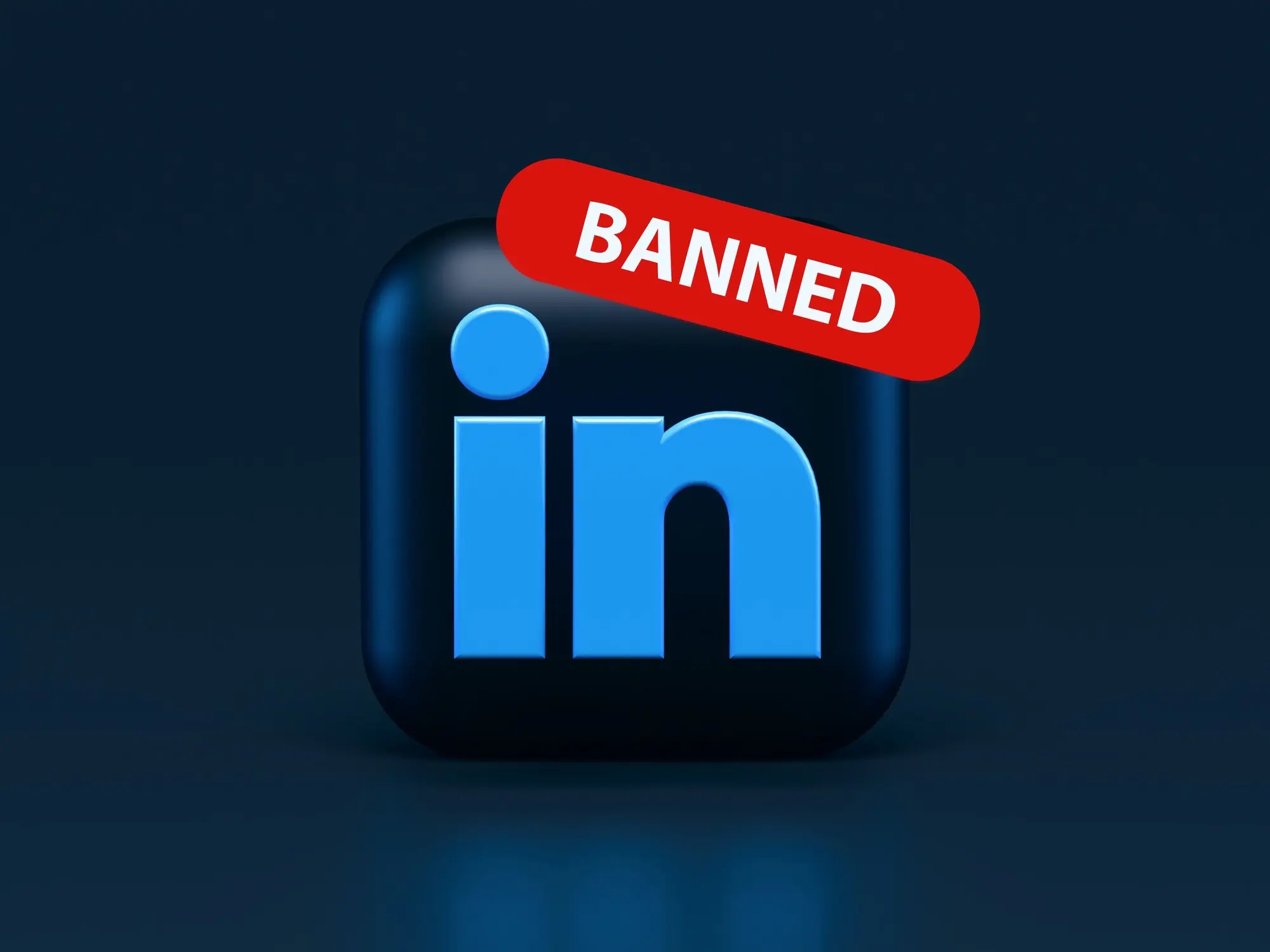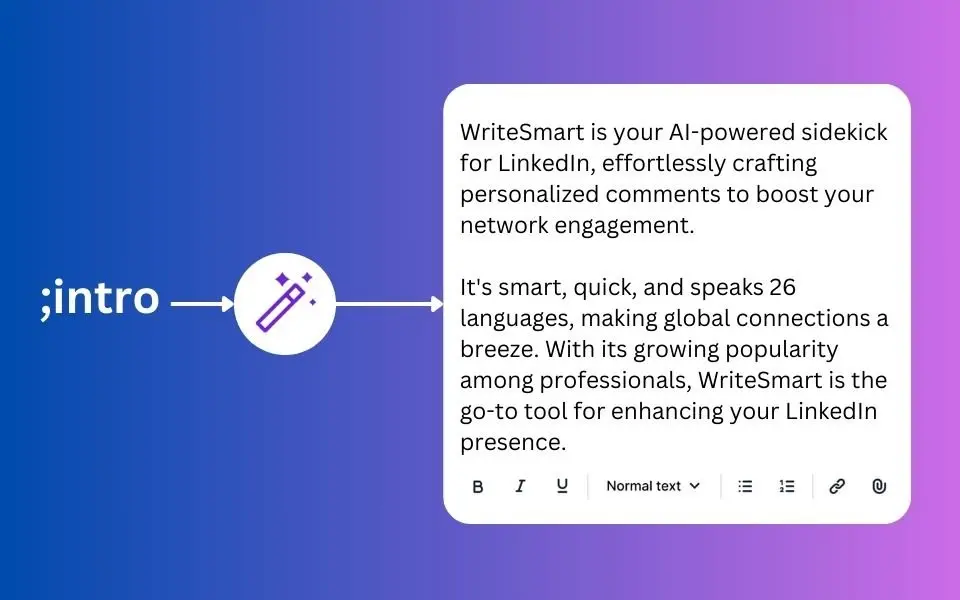08/06/2023
Shadow banning is when a platform quietly reduces the visibility of a user's content, often due to policy violations. The content looks normal to the user, but others might not see it. This can be frustrating, especially if you rely on social media for your profession or business. LinkedIn, the top professional networking site, also practices shadow banning. Let's explore what shadow-banning on LinkedIn entails, how you can prevent it, and what to do if you think you've been shadow-banned.
What is Shadow banning on LinkedIn?
Shadow banning on LinkedIn might not be as widely known as on other platforms, but it happens. We know multiple influencers who got shadow-banned by LinkedIn. They have 20k plus followers, but their content hardly gets 2-3 likes or comments.
Essentially, LinkedIn might limit the visibility of your content, causing fewer people to see your posts or updates. This often happens if there's a violation of LinkedIn's Community Policies. LinkedIn doesn't usually inform users when this happens, hence the term "shadow ban."
LinkedIn's rules are stricter compared to other platforms because of its professional focus. It's crucial that your LinkedIn content is safe, legal, appropriate, and professional. LinkedIn is more than a place for career advancement and self-promotion; it's a platform that values respect for privacy, intellectual property, and professional etiquette.
How do you detect if you are shadow-banned?
Many people have asked us if there is any LinkedIn shadow ban checker that can help them detect whether they are shadow-banned or not. Given that LinkedIn is a closed system, there are no tools like Shadowban checker for LinkedIn, and if they reduce your visibility, there are no tools that can detect it. But there are some ways you can confirm if you are shadow-banned by LinkedIn. Check out the methods below.
Decreased Engagement: If your posts are receiving significantly fewer likes, comments, or shares than usual, this could be a sign of a shadow ban. Consider whether the nature of your content has changed recently or if there's another reason why engagement might have dropped. If everything seems consistent, a shadow ban could be the culprit.
Fewer Profile Views: LinkedIn provides data on how many people have viewed your profile. If you notice a significant decrease in profile views, especially if your activity level has remained the same or increased, this could indicate a shadow ban. Note that fluctuations in profile views can occur naturally, but a consistent, sharp decrease might be a cause for concern.
Content Not Showing Up in Searches: When you use certain keywords or hashtags in your posts, they should appear when you or others search for those terms. If your content isn't showing up in these searches, it might be because of a shadow ban. Try this with multiple posts and keywords to be sure.
Posts Not Appearing in Feed: Your connections should see your posts in their LinkedIn feed. If they report not seeing your posts, despite you being active, it's possible that you've been shadow-banned. Reach out to several connections and ask if they've seen your recent activity to verify this.
Reasons for Being Shadow-banned on LinkedIn
Let's talk about why LinkedIn shadow-bans its users. Note that LinkedIn has not confirmed or denied anything about shadow-banning people. Shadow banning can occur for a variety of reasons, most of which revolve around violations of LinkedIn's Community Policies.
Here are some common reasons why a user might be shadow-banned:
Mass Connection Requests: Sending out connection requests en masse, especially to individuals you don't know or have no shared connections with, can be viewed as spam and might result in a shadow ban. You can receive connection requests, and that is considered positive as you are gaining influence on the platform.
Inappropriate or Offensive Content: Posting content that is deemed inappropriate or offensive can result in a shadow ban. This includes content that is discriminatory, harassing, or promotes harmful behavior.
Misinformation or Fake News: Spreading misinformation or fake news can lead to a shadow ban. LinkedIn values the accuracy and authenticity of the information shared on its platform.
Excessive Posting or Commenting: There is a natural frequency of posting and commenting on LinkedIn. It is not a simple formula, but if you are not an influencer with more than 5k followers, post 1 to 2 times a day, not more than five comments per day. Posting or commenting excessively within a short period of time might be seen as spamming, leading to a shadow ban.
Automated Behavior: If LinkedIn suspects that you're using bots or automated tools to post content, send messages, or interact with others, it can lead to a shadow ban. Note that there are legit tools like SocialPilot that can be used to publish content. LinkedIn recommends these tools but in conjunction with other rules. If you want to learn more about the automation tools and nuances of automation, read our blog 'Is LinkedIn Automation Illegal?"
Unwanted Tagging: Tag people you know and are confident they will not 'untag' themselves from the post. A person can 'untag' themselves from the post you tagged them on. This shows that the person is not interested in engaging with your content. LinkedIn algorithms take it very seriously, and repeated untags lead to a shadow ban. Even tagged people not engaging with your content is seen as unfavorable.
Keyword Stuffing: Overuse of keywords or hashtags can be interpreted by LinkedIn's algorithm as spam-like behavior, leading to a shadow ban.
How to Avoid Being Shadow-banned on LinkedIn
To avoid being shadow-banned, consider the following tips:
Follow LinkedIn's Community Policies: It's essential to acquaint yourself with LinkedIn's policies and guidelines. These rules cover everything from content appropriateness to privacy and intellectual property. Ensuring your content abides by these policies can prevent a potential shadow ban. Regularly review these guidelines, as they can be updated from time to time.
Maintain Professionalism: LinkedIn is a professional networking platform, so all your content should reflect this. Avoid sharing content that could be deemed unprofessional or inappropriate. This includes avoiding offensive language, inflammatory topics, or content that isn't suitable for a professional setting. Also, respect the professional boundaries of others. For example, avoid making unwanted romantic advances or sharing personal information about others without their consent.
Engage Appropriately: While engagement is crucial on LinkedIn, it's important to interact appropriately. Excessive posting, commenting, or tagging can be seen as spam and might lead to a shadowban. Try to balance your activity to ensure you're active and engaging without being overwhelming. Remember, the quality of engagement often outweighs the quantity.
Post Relevant Content: The LinkedIn algorithm favors content that is engaging and relevant. Aim to share content that resonates with your connections and aligns with your professional field. This not only helps avoid a shadowban but also increases the likelihood of generating meaningful engagement. Keep up-to-date with industry news, trends, and discussions to help inform your content strategy.
What fixes a Shadow-ban on LinkedIn
If you've noticed a sudden decrease in engagement on your posts or a lack of visibility, you might have been shadow-banned.
Here's what you can do:
Review Your Content: Look through your recent posts to see if any could violate LinkedIn's policies. If you have been excessively posting or commenting, using too many keywords or hashtags, posting inappropriate or offensive content, spreading misinformation, using automated behavior, tagging people excessively, or sending mass connection requests, consider adjusting these behaviors.
Contact LinkedIn Support: If you suspect a shadow ban, reach out to LinkedIn's support team. Explain the issue, provide any relevant details, and ask for clarification. LinkedIn's team can provide more information about any potential restrictions on your account and their possible reasons.
Adjust Your Behavior: Based on your review and any feedback from LinkedIn, make necessary changes to your posting and engagement practices. This could involve posting less frequently, reducing the number of people you tagging, being more careful with your content, or stopping any automated behavior.
Remove Violating Content: If you've identified content that clearly violates LinkedIn's policies, remove it. This shows LinkedIn that you're responsive and respectful of their guidelines.
Discontinue Use of Automation Tools: If you've been using automation tools for posting, commenting, or sending connection requests, discontinue their use. Before you do that, search more about what are genuine tools vs. what tools are not liked by LinkedIn. LinkedIn values natural human interaction, and using automation tools could lead to a shadow ban.
Increase Organic Engagement: Try to increase organic, meaningful engagement with your connections. Comment on others' posts thoughtfully, share useful content, and build genuine professional relationships.
Take a Break: Some users have reported that reducing activity or taking a short break from posting on LinkedIn can help reset their account status. While this isn't officially confirmed by LinkedIn, it could be worth a try.
Remain Patient and Consistent: Once you've made these changes, remain patient. It might take some time for LinkedIn to lift the shadow ban. Continue to engage respectfully and post relevant, professional content.
Conclusion
Understanding shadow banning is crucial for anyone looking to optimize their LinkedIn presence. By respecting LinkedIn's guidelines and engaging appropriately, you can maintain your visibility and make the most of this professional platform. If you think you've been shadow-banned, remain patient and proactive in addressing the situation. Shadow banning can be a setback, but it doesn't have to spell the end of your LinkedIn journey.
Remember, LinkedIn is a professional network, and the key to avoiding a shadow ban is to respect the platform's rules and the professional boundaries of other users. With a thoughtful and respectful approach, you can avoid shadow banning and keep your LinkedIn presence strong and effective.

Power of AI in your Social Networking



